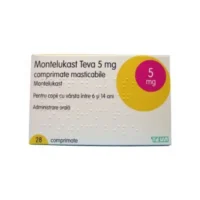Description
Eufillin (Theophylline) Ampoules 2% 5 ml. №10
Composition:
Each ampoule contains a 2% Theophylline solution in a 5 ml formulation.
Mechanism of Action:
Theophylline, the active component of Eufillin, acts by relaxing the bronchial smooth muscles, leading to bronchodilation. This mechanism helps in improving airflow to the lungs.
Pharmacological Properties:
Eufillin exerts its effects by inhibiting phosphodiesterase, resulting in increased levels of cyclic AMP, which further leads to bronchodilation and decreased inflammation in the airways.
Indications for Use:
Eufillin ampoules are indicated for the management of asthma, chronic bronchitis, and emphysema in patients requiring bronchodilator therapy.
Contraindications:
Do not administer Eufillin if there is a known hypersensitivity to theophylline or any other components present in the formulation. Patients with a history of severe cardiac arrhythmias should also avoid its use.
Side Effects:
Common side effects associated with Eufillin include nausea, headache, insomnia, gastrointestinal disturbances, and palpitations. In case of any severe adverse reactions, immediate medical attention is necessary.
Usage Instructions:
Eufillin should be administered as per the healthcare provider’s instructions. Typically, it is given via intravenous or intramuscular injection. The dosage is individualized based on the patient’s condition and response to treatment.
Benefits Over Analogues:
Compared to other bronchodilators, Eufillin offers a unique mechanism of action, providing effective bronchodilation and anti-inflammatory effects simultaneously, leading to improved lung function and symptom control.
Suitable Patient Groups:
Eufillin is suitable for use in both adult and pediatric populations under appropriate medical supervision. Dosing adjustments may be required in elderly patients or those with hepatic or renal impairment.
Storage and Shelf Life:
- Storage: Eufillin ampoules should be stored at room temperature, protected from light and moisture.
- Shelf Life: Check the expiration date on the packaging and do not use expired products.
Packaging Description:
Eufillin is available in packages containing 10 ampoules, each with a 5 ml solution of 2% Theophylline.
Clinical Evidence and Effectiveness:
Studies have demonstrated the efficacy of theophylline in improving lung function and reducing asthma exacerbations. Research published in the Journal of Allergy and Clinical Immunology supports the use of theophylline in chronic respiratory conditions, highlighting its benefits in symptom management and quality of life improvement.





